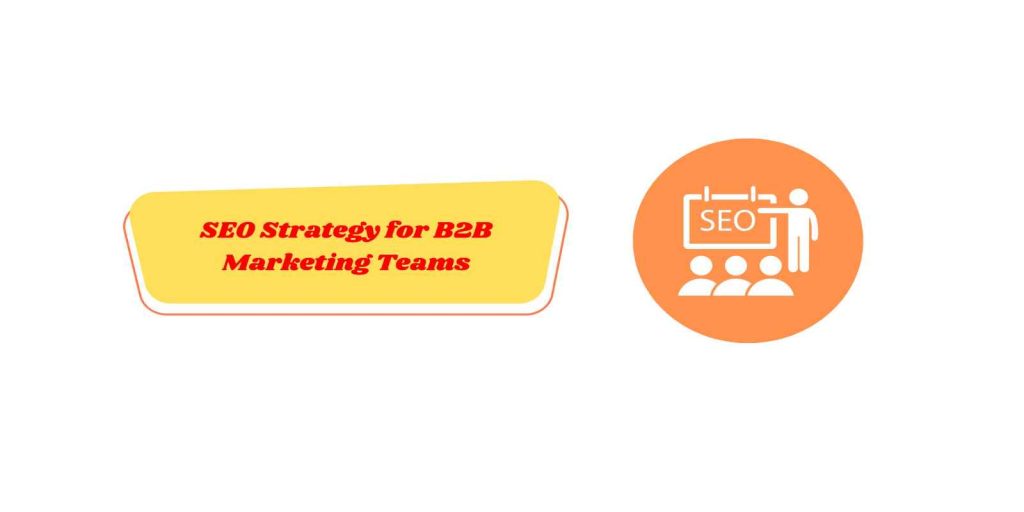In today’s digital landscape, search engine optimization (SEO) is no longer just about rankings; it’s about delivering value to potential prospects. A well-executed SEO strategy can transform your B2B marketing efforts, driving traffic, improving conversions, and building trust. The Prospect-Led SEO Strategy focuses on aligning your SEO efforts with the needs of your prospects, ensuring every step of the process is tailored to maximize relevance and engagement.
The Updated Seven-Step Prospect-Led SEO Strategy
Step 1: Strengthen Your Technical SEO Foundation
- Key Actions:
- Choose a CMS platform that supports SEO best practices natively.
- Configure Google Search Console, submit a sitemap, and monitor indexing issues.
- Ensure critical web pages are not blocked from Google crawling.
- Optimize your website for mobile responsiveness and speed.
Also Read: Top 50 Search Console Interview Question with Answer
Step 2: Strategic Content Planning
- Key Actions:
- Conduct keyword research to uncover search terms with high volume and relevance.
- Group keywords into topic clusters focused on problems and solutions.
- Prioritize topics based on search intent and conversion potential.
- Map out content gaps and schedule content refreshes.
Step 3: Enhance UX and CRO for Better Engagement
- Key Actions:
- Optimize the user experience of high-traffic pages to maximize conversions.
- Redesign blog pages with click-through rate (CTR) in mind.
- Develop landing page templates that clearly guide users through the conversion funnel.
Step 4: Implement Robust Analytics and Tracking Systems
- Key Actions:
- Set benchmarks for core metrics like organic traffic, CTR, and conversion rates.
- Regularly update tracking systems to monitor changes in performance data.
- Design dashboards tailored for CXOs, ensuring that metrics align with business objectives.
Step 5: Focused Content Production
- Key Actions:
- Build a structured content production system to streamline task management.
- Produce content that addresses real prospect challenges and offers actionable insights.
- Optimize published pages for both discovery and conversions.
- Incorporate multimedia like videos, infographics, and downloadable resources.
Step 6: Build High-Quality Backlinks
- Key Actions:
- Identify pages with the highest potential for organic ranking improvement.
- Launch targeted outreach campaigns for quality backlinks.
- Develop content assets like whitepapers or case studies to naturally attract links.
Also Read: 10 Outdated SEO Activities to Avoid in 2025
Step 7: Iterative SEO Testing for Continuous Improvement
- Key Actions:
- Track core SEO KPIs such as rankings, impressions, and engagement weekly.
- Regularly update on-page content and meta tags for ongoing optimization.
- Run conversion rate optimization (CRO) tests to refine the user experience.
Also Read: What is the Purpose of A/B Testing in Digital Marketing?
Summary Table for the Prospect-Led SEO Strategy
| Step | Key Focus | Action Items |
|---|---|---|
| Technical SEO Foundation | Ensuring website readiness | CMS setup, Google Search Console, sitemap submission |
| Content Planning | Targeting the right audience | Keyword research, topic clustering, prioritizing high-relevance topics |
| UX & CRO Updates | Improving user engagement | Page redesign, click-through optimization, conversion funnel enhancement |
| Analytics Design | Tracking performance effectively | Metrics benchmarks, updated analytics systems, CXO-friendly dashboards |
| Content Production | Creating valuable, prospect-focused content | Content structuring, optimized publication, multimedia integration |
| Link Building | Strengthening domain authority | Quality link-building campaigns, resource-based link attraction |
| Iterative Testing | Refining and improving based on insights | Weekly KPI tracking, content updates, CRO experimentation |
Conclusion
The Prospect-Led SEO Strategy provides a streamlined framework to align your SEO efforts with business objectives and user intent. By following these seven steps, B2B marketing teams can build a scalable system to not only improve search visibility but also enhance user experience and drive meaningful conversions.
Remember, SEO is a marathon, not a sprint. Continuous optimization, testing, and adapting to new trends are essential for sustained success. Begin implementing this strategy today to witness tangible results.

